Did you know that how you care for your viburnum shrubs after they bloom can make a big difference in their health and flowering ability for next year – especially when it comes to how you prune and fertilize!
Viburnum is a flowering shrub or tree that comes in a wide range of varieties, shapes and sizes. In fact, over 150 different cultivators are available, each with different features and growing habits.
Viburnum’s light pink, white, or cream-colored blooms start appearing between early spring and usually last throughout June. Those blooms actually turn into fruit for some varieties, which are perfect for attracting hungry birds and wildlife to your property.
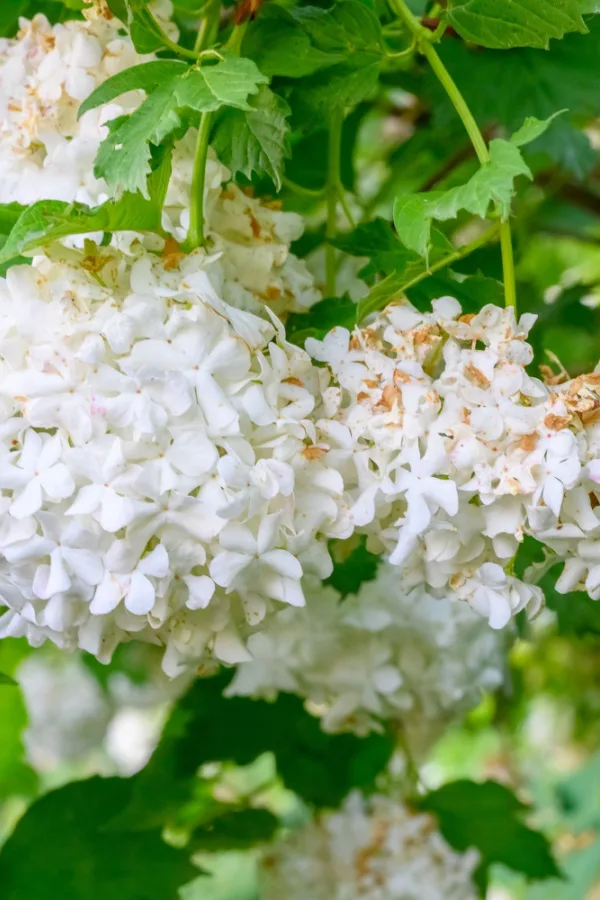
Viburnum shrubs that grow in cooler locations are typically deciduous (i.e., their leaves change colors in the fall and eventually drop) or semi-deciduous. Viburnums that grow in warmer climates are normally evergreen plants.
While viburnum plants take very little maintenance overall, proper care after blooming is vital to help the plant begin to prepare for blooming the following year. And as you will see below, that after flowering care includes pruning and fertilizing for future success!
How To Prune & Fertilize Viburnum After They Bloom
How Viburnum Blooms
The way a plant blooms can make a big difference in how you treat them in regard to pruning. Some plants only produce buds on new wood while others need older wood to create blooms.
Although pruning during the wrong time frame will not typically kill plants, it can greatly reduce the number of blooms that appear either during the current or following year. And that is exactly why pruning your viburnum after they finish blooming is critical!
Viburnum shrubs or trees bloom on the wood that grew the previous year. Therefore, pruning should take place after or just as the shrub is finishing its annual bloom cycle. If you were to prune them in early spring, you unfortunately are removing this year’s blooms by removing last year’s growth.
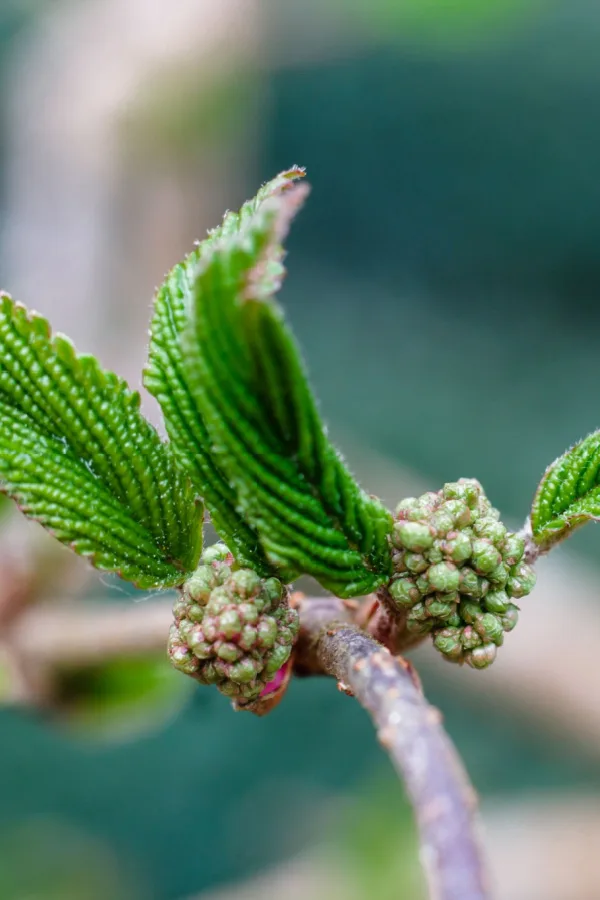
On the other hand, if you prune viburnum in late summer or fall, you are removing the new wood that has grown since the shrub bloomed. And that wood contains the new buds that will flower next spring. See: 6 Bushes & Shrubs To Avoid Pruning In The Fall
When To Prune – How To Fertilize & Prune Viburnum After They Bloom
Any major pruning or shaping of your viburnum should take place right after the shrub finishes blooming. This allows plenty of time during the remainder of summer for the shrub to grow new wood and bloom sets for the following season.
The only time this should differ is if your shrub happens to produce fruit after blooming. For these varieties, it is best to wait until after its fruit drops to the ground in early fall. You can do light pruning at any point during the growing season on any viburnum variety. This should be for only light shaping, or to remove any dying, diseased, or damaged branches.
There is one time you never want to prune viburnum and that is in the winter when temperatures are cold. Unlike other shrubs and trees that are completely dormant during the winter, viburnum can experience major shock and/or freeze damage when cut back in the cold.
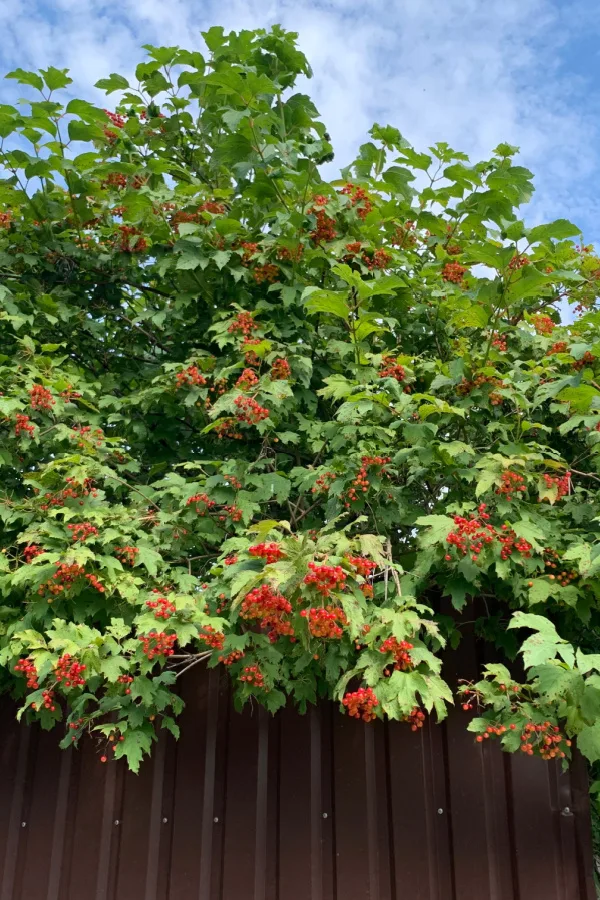
Pruning Tips – How To Prune & Fertilize Viburnum After They Bloom
For pruning, a good pair of hand held pruners, along with loppers for larger branches can handle most of the cuts with ease. If you will be pruning the shrub way back, a small hand saw may be necessary for some of the larger branches near the main stem.
Always be sure to disinfect the blades before trimming. Pruning blades can harbor plant disease quite easily. And those diseases can be spread when pruning different varieties or even the same variety of plants.
It’s a good idea to note any branches that are growing inward toward the middle of the tree and remove them. These branches will not be useful in the long run and will likely become stunted or cause unwanted rubbing or damage to otherwise healthy branches in years to come.
You also want to note any branches that are growing downward and remove them. As the shrub or tree grows, those branches will eventually become an issue.
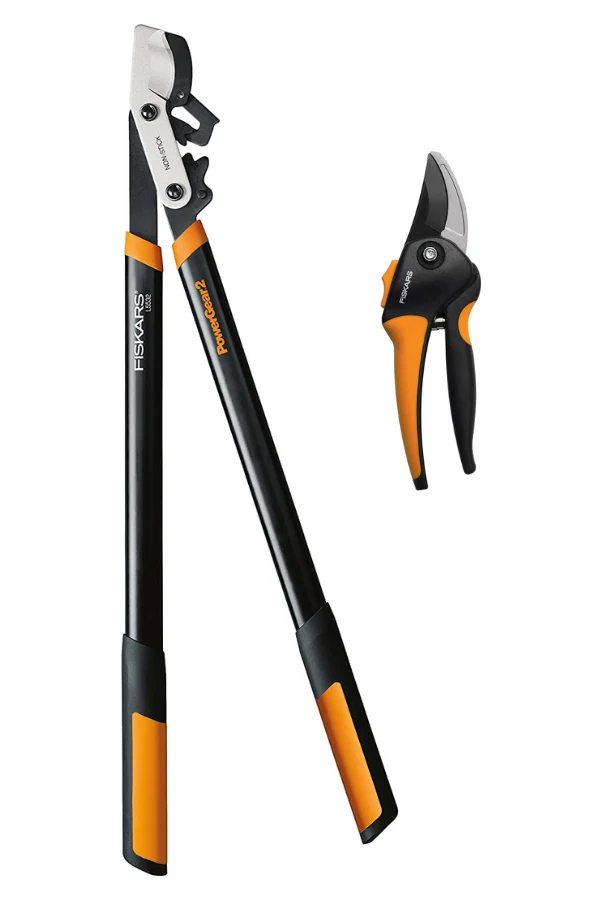
Also look for any branches that are rubbing against one another. You will want to keep the healthiest branch or the one that is growing in a better direction and remove the other. Rubbing branches typically cause tears in the bark, which is an open invitation for diseases to enter through.
Major Pruning
When cutting back to the trunk of the tree, be sure to leave a few inches and don’t cut it flush against the trunk. Also, cut branches at an angle to avoid water pooling on the cut part after rain.
Only remove a third of well-established shrubs or trees at the most each year. Removing more than that can cause a delay in blooming and flowering the following growing season.
If your viburnum shrub has been neglected for several years, space your pruning out over a few years. Pruning plants too harshly at once can cause issues with growing as well as halt flowering.
Re-Energizing Your Viburnum – How To Prune & Fertilize Viburnum After They Bloom
The good news is that viburnum do not require a massive amount of nutrients from the soil to bloom. But with that said, giving them a once a year boost of power can really help improve their blooms from year to year. Especially when that boost is given right after they finish blooming!
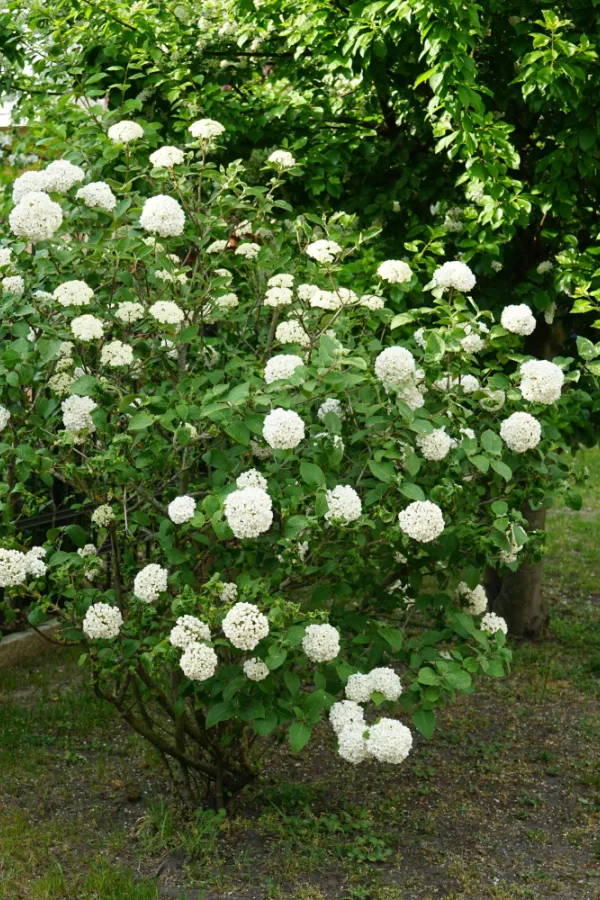
By fertilizing at this point, you can help the shrub recover from the energy lost during its blooming cycle. In addition, the additional nutrients also help the shrub with the new growth that will contain the following year’s blooms.
A simple, all purpose tree and shrub slow-release granular fertilizer is the best choice for viburnum. It will feed the plant over the entire summer to promote growth without overpowering it with too many nutrients. Affiliate Product Link: Nelson – Trees, Shrubs, & Evergreens Plant Food
To fertilize, sprinkle the recommended rate on the package. Then, gently rake the fertilizer into the mulch or soil around your plant. A light watering can help set the fertilizer in place and get it working fast.
Here is to taking time to prune and fertilize your viburnum after it blooms – and to setting the stage for bigger and better flowering next year!
Follow Our Facebook Page For Even More Great Tips! Simple Garden Life Facebook Page
Simple Garden Life is a website dedicated to keeping gardening fun, simple and enjoyable! We publish two new articles each week along with a new garden podcast episode every two weeks. This article may contain affiliate links.
